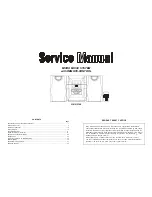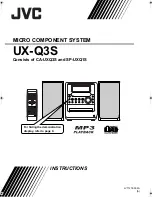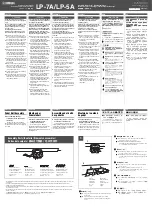
13
E
ARTHING
The connection to earth (ground) in an audio system is important for two reasons:
1.
SAFETY
- To protect the operator from high voltage shock associated with the AC
mains supply feeding the system, and
2.
AUDIO PERFORMANCE QUALITY
- To minimise the effect of earth (ground) loops
which result in audible hum and buzz, and to shield the audio signals from external
interference.
For safety it is important that all equipment earths are connected to mains earth so that
exposed metal parts are prevented from carrying high voltage which can injure or even kill
the operator. A solid, low impedance earth system is necessary to ensure that earths at
different points in the system are kept at the same potential. A typical sound system
includes amplifiers, signal processing equipment, microphones, musical instruments and
much more in addition to the console, all of which require earth connection for safety and
correct audio operation. Often this equipment is spread across the venue and interconnected
by hundreds of metres of power and audio cables. It is recommended that the sound
engineer check the continuity of the safety earth from all points in the system including
microphone bodies, guitar strings, muticore cases, equipment panels ...
The same earth is also used to shield audio cables from external interference such as the
hum fields associated with power transformers, lighting dimmer buzz, and computer
radiation. Earth is also used for the signal 'return' when connecting to unbalanced
equipment. Problems arise when the signal sees more than one path to mains earth. An
'earth loop' (ground loop) results causing current to flow between the different earth paths.
A larger potential difference between these paths results in more current flow and so more
audible noise. This condition is usually detected as a low frequency hum or buzz at mains
frequency or its harmonics.
To ensure operator safety and trouble-free audio performance from your system we
recommend the following :
Do not remove the earth connection from the power unit mains plug.
The
console chassis is connected to mains earth through the power cable to ensure your safety.
Audio 0V is connected to the console chassis internally. If problems are encountered with
earth loops operate the audio 'ground lift' switches on connected equipment accordingly,
or disconnect the cable screens at one end, usually at the destination. It is useful to carry
ground lift cable adaptors such as short XLR male to female leads with pin1 disconnected.
Use a separate 'clean' mains outlet for the audio equipment
to prevent
interference from other equipment such as lighting, stage machinery and vending
machines. Ensure a good central 'star point' earth connection.
Avoid running audio cables next to mains, computer or lighting cables,
or near
thyristor dimmer and power supply units. If unavoidable, cross these at right angles.
Use low impedance sources
such as 200 ohm or less microphones to reduce
susceptability to interference. The console outputs are designed to operate at very low
impedance to minimise interference problems.
Use balanced connections where possible
as these provide further immunity by
cancelling out interference that may be picked up on long cable runs. To connect an
unbalanced source to a balanced console input, link the cold input (XLR pin3 or jack ring)
to 0V earth (XLR pin1 or jack sleeve) at the console. To connect a balanced console output
to an unbalanced destination, link the cold output to 0V earth at the console.
Use professional quality cables and connectors
and check for correct wiring and
reliable solder joints.
If you are not sure ...
Have your system checked by a competent engineer, or
contact your local Allen & Heath agent for advice.















































